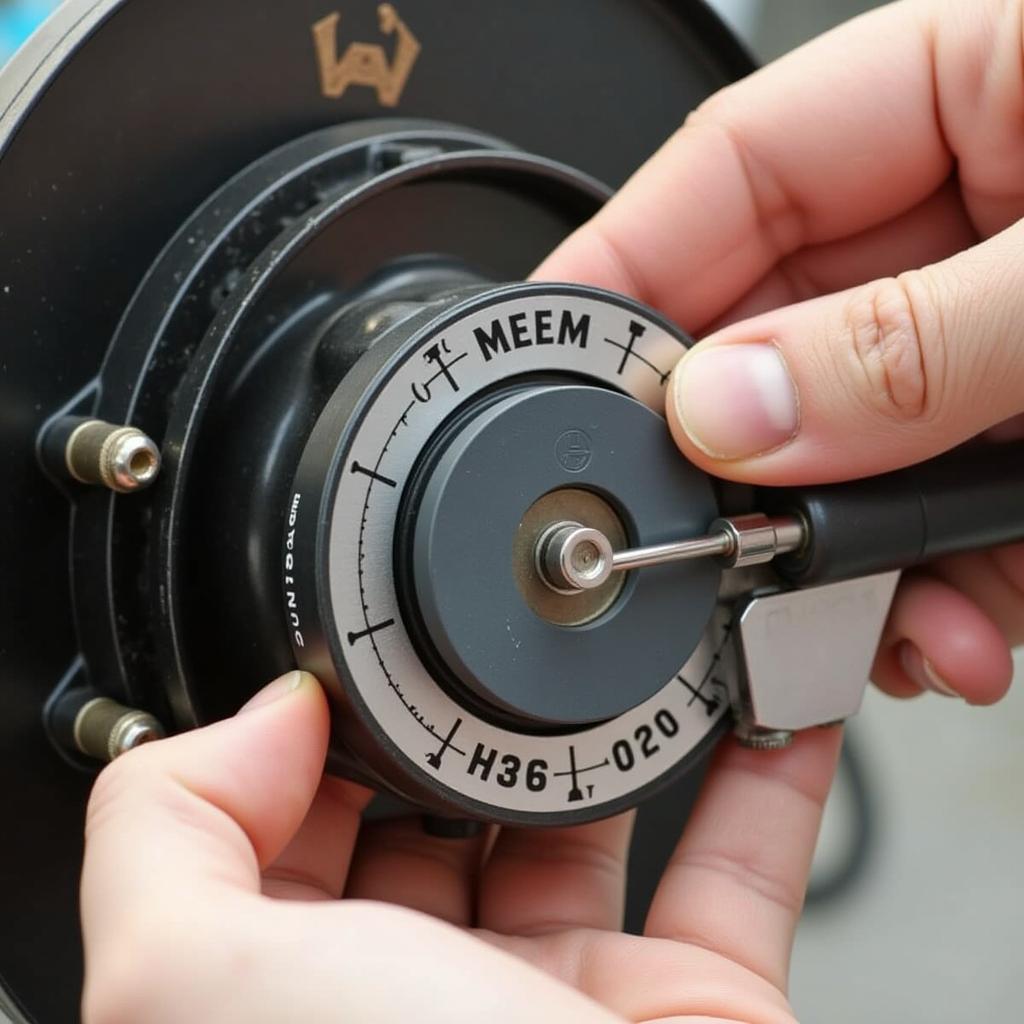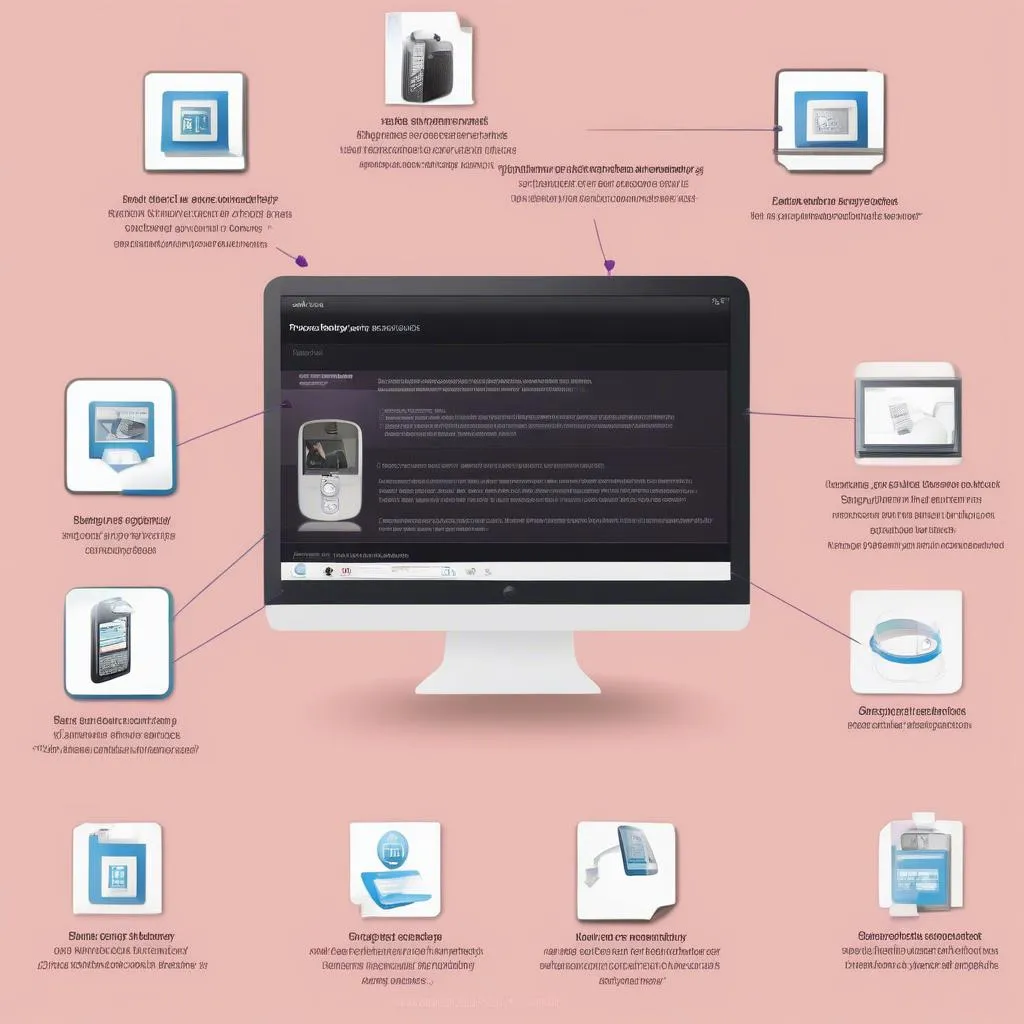The Warner Electric Brake and Clutch PB-1225 is a popular choice for a variety of industrial applications, known for its robust design and reliable performance. However, like any electromechanical device, it can occasionally experience issues. This comprehensive troubleshooting guide will help you diagnose and resolve common problems encountered with the Warner PB-1225, empowering you to get your equipment back up and running quickly.
Understanding the Warner Electric Brake and Clutch PB-1225
Before diving into troubleshooting, it’s helpful to have a basic understanding of the PB-1225’s function and components. This electromagnetic brake and clutch unit is designed to provide precise control over motion and stopping power in various machinery and equipment. It consists of a coil, an armature, a friction disc, and a hub. When the coil is energized, it creates a magnetic field that attracts the armature, engaging the friction disc and transmitting torque. De-energizing the coil releases the armature, disengaging the brake or clutch.
Common Issues and Troubleshooting Steps
Here are some common problems you might encounter with the Warner PB-1225 and the steps to troubleshoot them:
1. Brake or Clutch Not Engaging
Possible Causes:
- Loss of power supply
- Defective coil
- Broken armature spring
- Worn friction disc
- Incorrect air gap adjustment
Troubleshooting:
- Check Power Supply: Ensure the unit is receiving the correct voltage and current. Use a multimeter to verify the voltage at the coil terminals.
- Inspect the Coil: Visually examine the coil for any signs of damage, such as burns or breaks in the wiring. Measure the coil resistance using a multimeter and compare it to the manufacturer’s specifications.
- Examine the Armature Spring: Check if the spring is broken or damaged, preventing the armature from returning to its disengaged position.
- Inspect the Friction Disc: A worn or damaged friction disc can lead to slippage and prevent engagement. Check for signs of excessive wear, glazing, or oil contamination.
- Verify Air Gap: An incorrect air gap between the armature and the friction disc can also prevent proper engagement. Refer to the manufacturer’s specifications for the correct air gap measurement and adjust accordingly.
 Warner PB-1225 air gap adjustment
Warner PB-1225 air gap adjustment
2. Brake or Clutch Slipping
Possible Causes:
- Worn friction disc
- Oil or grease contamination on the friction surface
- Insufficient coil voltage
- Incorrect spring tension
Troubleshooting:
- Inspect Friction Disc: As before, check the friction disc for wear, glazing, or contamination. Replace if necessary.
- Clean Friction Surfaces: Thoroughly clean the friction disc and mating surfaces to remove any oil, grease, or debris that may be causing slippage. Use a suitable brake cleaner for this purpose.
- Verify Coil Voltage: Ensure the coil is receiving the correct voltage. Low voltage can result in reduced magnetic force and slippage.
- Check Spring Tension: If applicable, verify that the spring tension is set according to the manufacturer’s specifications. Incorrect tension can lead to insufficient clamping force.
3. Overheating
Possible Causes:
- Excessive engagement time
- Incorrectly adjusted air gap
- Inadequate heat dissipation
- Improper lubrication
Troubleshooting:
- Review Engagement Time: Ensure the brake or clutch is not being engaged for excessively long periods, leading to heat buildup.
- Check Air Gap: An incorrectly adjusted air gap can cause increased friction and heat generation. Verify and adjust the air gap as needed.
- Improve Heat Dissipation: Ensure adequate airflow around the unit to prevent overheating. Consider using a heat sink or fan if necessary.
- Lubricate Properly: Use the correct type and amount of lubrication, as specified by the manufacturer, on moving parts to reduce friction and heat.
 Warner PB-1225 friction disc inspection
Warner PB-1225 friction disc inspection
4. Noise During Operation
Possible Causes:
- Worn friction disc
- Damaged bearings
- Loose mounting hardware
- Misalignment
Troubleshooting:
- Inspect Friction Disc: Worn friction discs can create noise during operation. Replace if necessary.
- Check Bearings: Inspect the bearings for any signs of damage or wear, such as roughness, play, or unusual noise. Replace damaged bearings.
- Tighten Mounting Hardware: Ensure all mounting bolts and screws are properly tightened to prevent vibration and noise.
- Verify Alignment: Check the alignment of the unit with the connected components. Misalignment can lead to uneven wear and noise.
Remote Diagnostics and Support
In today’s technologically advanced world, remote diagnostics and support have become invaluable tools for troubleshooting complex industrial equipment like the Warner PB-1225.
“Remote diagnostics allow us to quickly identify and address issues with minimal downtime for our clients,” says John Smith, a senior automation engineer with over 20 years of experience. “By remotely accessing the equipment’s control system, we can analyze real-time data, run diagnostics, and often resolve the problem without the need for an on-site visit.”
These advanced technologies enable technicians to:
- Remotely monitor the performance of the PB-1225
- Analyze real-time data and identify potential issues before they escalate
- Perform remote troubleshooting and provide guidance for on-site personnel
- Upload and install software updates or parameter adjustments remotely
This level of remote support minimizes downtime, reduces travel costs, and ensures faster problem resolution.
Conclusion
The Warner Electric Brake and Clutch PB-1225 is a reliable and robust unit, but like any mechanical or electrical component, it can experience issues. By following this troubleshooting guide, you can diagnose and resolve many common problems, ensuring the smooth operation of your equipment. However, if the problem persists or you’re unsure about any step, it’s always recommended to consult with a qualified technician or contact Warner Electric’s technical support for expert assistance. Regular maintenance and prompt attention to any emerging issues will maximize the lifespan and performance of your Warner PB-1225 unit.

